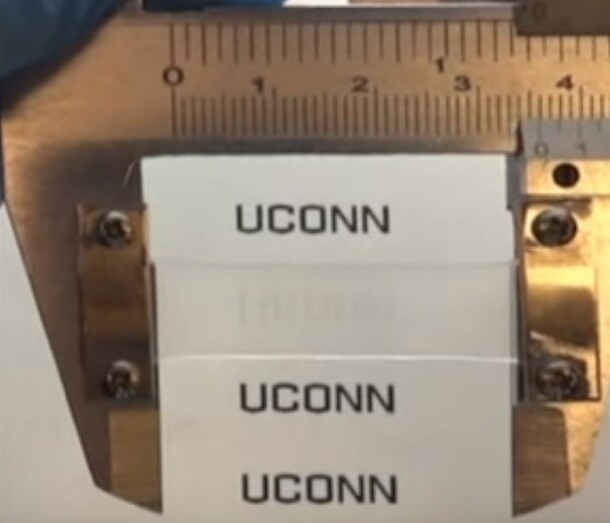Marine animals such as squid, cuttlefish, and octopus can display incredible patterns of colors by selectively contracting individual muscles to activate pigment-containing cells below their skin. Inspired by this novel capability, researchers from the University of Connecticut have created color and transparency changing materials that alter their properties in response to mechanical force. Known collectively as mechanocromics, these materials might be used to create everything from smart windows to physical encryption devices.
Mechanocromic polymers are materials that change the way they reflect or absorb light in relation to mechanical action (for example, shearing, stretching, and rubbing) because of the interruption of intermolecular interactions. A team led by Dr. Luyi Sun (Associate Professor Department of Chemical & Biomolecular Engineering), and his coworkers, Mr. Songshan Zeng (Institute of Materials Science) and Dr. Dianyun Zhang (Assistant Professor Department of Mechanical Engineering) at the University of Connecticut, has taken advantage of these properties to create four different types of mechanochromic devices.
The first type is a transparency change mechanochromism (TCM) that is able to reversibly and instantly switch between transparent and opaque states when stretched and then released. According to the researchers, this sort of device could be used to create smart windows that become opaque or transparent when a mild stretching force is applied.

Device number two exhibits luminescent mechanochromism (LM), where it emits intensive fluorescence when stretched. The third displays color alteration mechanochromism (CAM), where it changes from green, to yellow, then to orange as progressive force is applied. And the fourth device displays encryption mechanochromism (EM) where a simple bilayer system containing a rigid thin film and a soft substrate can reversibly reveal and conceal any desired pattern or text when stressed.
"Such mechanochromic devices themselves are unique and hold a high potential for many applications, such as smart windows, dynamic optical switches, strain sensors, encryption, etc." said Dr. Luyi Sun, Associate Professor Department of Chemical & Biomolecular Engineering at UConn, "These simple and well-designed mechanochromisms can be adopted by fellow researchers for a much wider scope of devices for widespread application."
According to the researchers, this is the first report in achieving such a wide scope of mechanochromic response with excellent reversibility and sensitivity based on a simple bilayer structure and uncomplicated fabrication procedures.
The video below demonstrates a TCM device in action.
Source: University of Connecticut






